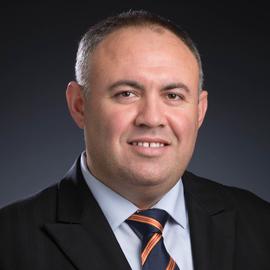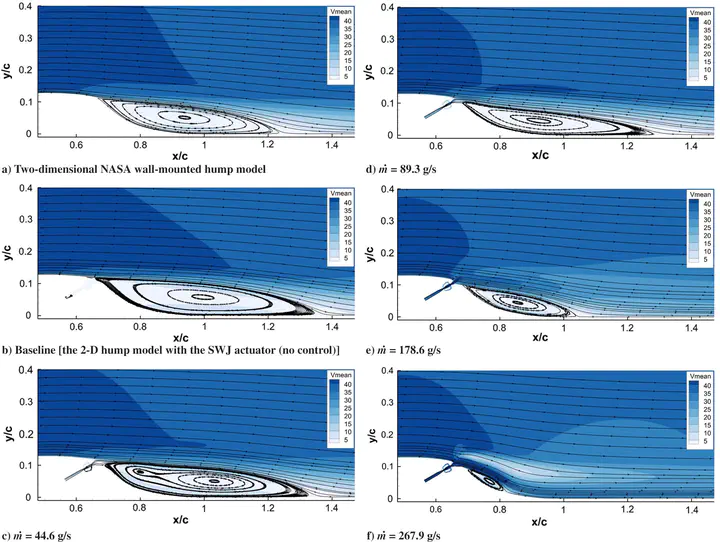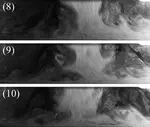Abstract
Transformational aerodynamic technologies will play a vital role in improving the next generation aircraft’s performance and contribute enormously to the product cost and operability. Active flow control (AFC) is one of the promising technologies to control boundary-layer separation, mixing, and noise.
Fluidic actuators increase momentum in the local flowfield by fluid injection. Sweeping jet (SWJ) actuators belong to this category of actuators, and they are based on fluidic oscillators with no moving parts.
When pressurized with a fluid, an SWJ actuator emits a continuous but spatially oscillating jet at the outlet. The oscillations are entirely self-induced and self-sustaining. The jet attaches itself to either side as the supplied fluid passes through the SWJ actuator due to the Coanda effect. Then, pressure increases in the feedback loop and pushes the jet to the other side. This process repeats cyclically. As a result, an oscillating jet that sweeps from one side of the exit nozzle to the other is obtained. For more information, see the papers below.

Kursat Kara
Associate Professor, Mechanical and Aerospace Engineering
Kursat Kara is an Associate Professor of Mechanical and Aerospace Engineering at Oklahoma State University and principal investigator of the Kara Aerodynamics Research Laboratory. His research spans hypersonic boundary-layer physics, unsteady aerodynamics, and the emerging interface of quantum computing and fluid dynamics. A dedicated educator and mentor, he teaches core and advanced courses—including Fundamentals of Aerodynamics, Computational Fluid Dynamics, Boundary-Layer Theory and Transition, and Quantum Computing—and supervises graduate and undergraduate projects in high-fidelity simulation and data-driven modeling. His work has been funded by NASA, NSF, Oklahoma NASA-EPSCoR, NAVAIR, ANSYS, and IBM Quantum. In 2025, he received the CEAT Excellent Faculty Award and was nominated for both the 2024 Excellent Teacher Award and the 2025 Excellent Faculty Award by OSU’s School of Mechanical and Aerospace Engineering. Dr. Kara earned his Ph.D. from Old Dominion University with a dissertation on hypersonic boundary layer receptivity to acoustic disturbances. He began his career as a research engineer at New England Analytics (supporting Sikorsky Aircraft), then completed a post-doctoral appointment at Penn State in hot jet simulations for aeroacoustics. In 2010, he helped establish the Aerospace Engineering Department at Khalifa University—where he won the President’s Faculty Excellence Award for Outstanding Teaching in 2015—before joining OSU. An active member of AIAA and APS, he served on the AIAA Applied Aerodynamics Technical Committee (2012–2021) and chaired/co-chaired multiple AIAA conferences. He also sits on the editorial board of Nature Scientific Reports and guest-edits its Quantum Computing collection.





